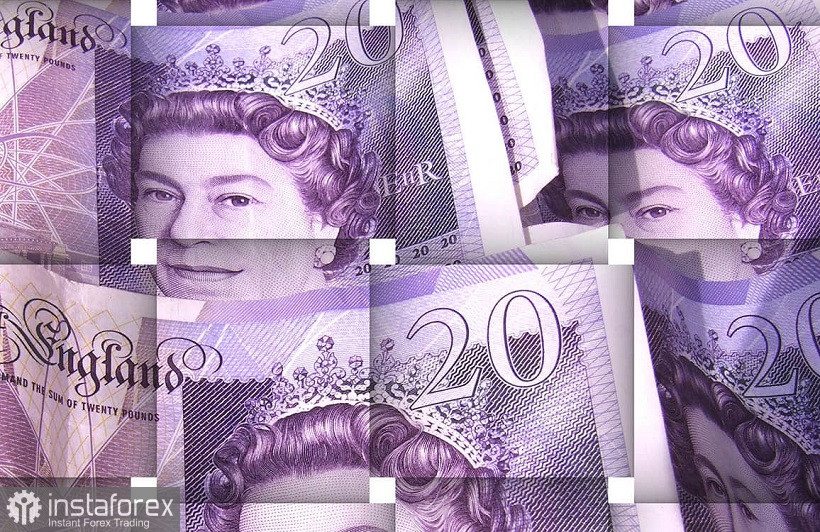The pound continues to plunge: the pound has tested the level of 1.1410. This is the price low that was reached in the spring of 2020, when the British economy was hit by the first wave of the coronavirus crisis. The GBP/USD pair was below this target for the last time 37 years ago, that is, in 1985.
The pound is getting cheaper for several reasons. Among them are the main ones: the energy crisis, conflicting comments of representatives of the Bank of England, the risk of stagflation, and fears related to possible economic decisions by the new British Prime Minister Liz Truss. Such a unipolar fundamental background allows the GBP/USD bears to open new price horizons. Of course, the greenback also plays a role here, which is strengthening its position throughout the market. The US Dollar Index again hit a 20-year high, hitting 110.76. After that it rolled back down, but in general the situation remains under the control of the dollar bulls. At least against the pound.

In general, the market is filled with pessimism about the future prospects of the British currency. For example, currency strategists at Credit Suisse said that the GBP/USD pair is moving steadily towards the 10th figure. In their opinion, the bears will overcome and consolidate below the support level, which is located at the aforementioned 1.1410 mark (this target also coincides with the lower line of the Bollinger Bands indicator on the daily chart).
In my opinion, it is too early to talk about the prospects of a decline to the level of 1.1000, but at the same time, the GBP/USD bears may well settle in the price range of 1.1300-1.1450. The current fundamental background is quite conducive to this.
In particular, Wednesday's parliamentary hearings on the report of the Bank of England on monetary policy were not in favor of the pound. Despite record inflation growth, the central bank officials voiced a rather restrained position regarding the pace of the rate hike. For example, Committee member Silvana Tenreyro stated that a more gradual pace of tightening reduces the risk of "overshoot". At the same time, she added that the English central bank "must act slowly and prudently" in the face of great uncertainty.
I note that following the results of parliamentary hearings, the probability of a 75-point rate hike at the September meeting decreased from 70% to 52%.
The pound also reacted to the main political event for the UK. As you know, Liz Truss, who previously headed the Ministry of Foreign Affairs, became the country's new prime minister. She built the election campaign on slogans about tax cuts in the country. In particular, the new Conservative leader plans to cancel the increase in the national insurance fee and abolish the corporate tax increase planned for next year (from 19% to 25%). Earlier, Truss also expressed her intention to reduce the value added tax by 5 percentage points (to 15%). In this case, it will be the largest VAT reduction in its history.
In general, many British journalists warned during the election campaign that if Thatcher No. 2 comes to power, Downing Street will have more control over the country's economy. Whether such conclusions are fair or not, time will tell, but here it is worth recalling that Truss announced back in August that she plans to revise the mandate of the BoE. In her opinion, the government should consider the possibility of limiting the central bank's decision-making on interest rates. It is also believed that Truss will pursue a tougher policy towards Brussels in the context of Brexit implementation.
In other words, Boris Johnson's successor has become a "headache" for GBP/USD bulls, given her declared intentions.
Another negative factor for the British currency is the trade account deficit. Let me remind you that in the first quarter this figure rose to 8.3% of GDP. One of the reasons is the rise in the price of fuel imported into the country. The energy crisis has not bypassed the country of Great Britain.
Thus, the pound is under the yoke of numerous problems of a fundamental nature. The dollar, in turn, is kept afloat due to the strengthening of hawkish expectations regarding the further actions of the Fed. Following yesterday's August ISM Services PMI report, the best reading since April this year, the CME Group FedWatch Tool signaled a 70 percent chance of a 75 basis point rate hike at its September 21 meeting.
In such conditions, it is not necessary to talk about long positions. The pound is too vulnerable, while the dollar is in high demand, not only against the pound, but throughout the market. Therefore, it is advisable to open short positions for the pair, using the upward corrective rollbacks as a reason to enter shorts. The first, and so far the main downward target is 1.1410, which is a two-year price low, which coincides with the lower line of the Bollinger Bands on the D1 timeframe.
 English
English 
 Русский
Русский Bahasa Indonesia
Bahasa Indonesia Bahasa Malay
Bahasa Malay ไทย
ไทย Español
Español Deutsch
Deutsch Български
Български Français
Français Tiếng Việt
Tiếng Việt 中文
中文 বাংলা
বাংলা हिन्दी
हिन्दी Čeština
Čeština Українська
Українська Română
Română

